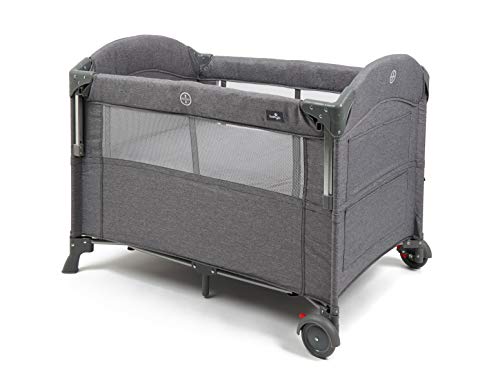The Benefits and Considerations of Bedside Sleepers for New Parents
As new parents navigate the exciting and frustrating experience of welcoming a newborn, guaranteeing a safe and comfortable sleeping arrangement becomes crucial. Among the innovative solutions that have actually gained enormous popularity over the last few years is the bedside sleeper. This convenient sleeping arrangement uses several advantages, catering specifically to the needs of both parents and their infants. This short article looks into the numerous features, advantages, and factors to consider of bedside sleepers, along with often asked questions.
What is a Bedside Sleeper?
A bedside sleeper, often referred to as a co-sleeper, is a kind of crib created to attach safely to the side of the parent's bed. It enables the newborn to sleep within arm's reach while creating a different sleep space, which is important for the baby's safety. Bedside sleepers been available in various styles, sizes, and designs, making it easy for parents to find an appropriate one that matches their home design and personal choices.
Key Features of Bedside Sleepers
Bedside sleepers typically have special features that set them apart from standard cribs or bassinets. Here are some typical characteristics:
- Adjustable Height: Many bedside sleepers enable parents to adjust the height to match their bed, ensuring smooth access to the baby.
- Durable Safety Straps: Bedside sleepers are geared up with safety straps that secure them to the side of the adult bed, preventing unintentional motion.
- Breathable Mesh Sides: Most designs have mesh sides for presence and air flow, allowing parents to monitor their baby without fuss.
- Easy Access: The design allows parents to reach their baby quickly for feeding or reassuring without getting out of bed.
- Mobility: Many bedside sleepers are lightweight and easy to move, making them convenient for travel.
Benefits of Bedside Sleepers
1. Encourages Bonding
Being able to see, hear, and reach their baby easily cultivates a strong bond in between parents and infants. Bedside sleepers facilitate skin-to-skin contact, nighttime feedings, and soothing.
2. Promotes Safe Sleep
Bedside sleepers are developed to fulfill security standards for infant sleeping. The separate space reduces the dangers associated with co-sleeping, such as suffocation, while still enabling parents proximity.
3. Easier Nighttime Feedings
Breastfeeding mothers, in specific, appreciate bedside sleepers for their convenience. Moms can nurse their babies without totally awakening, which assists reduce nighttime routines for both parents and infants.
4. Enhanced Sleep Quality
With a bedside sleeper, parents can keep a continuous eye on their infants, which can lead to lower anxiety and enhanced sleep quality for both celebrations.
5. Saves Space
For parents with limited space, bedside sleepers offer a practical solution. They inhabit less room than traditional cribs and can be safely connected to the parents' bed.
| Feature | Bedside Sleeper | Traditional Crib |
|---|---|---|
| Proximity to Parents | Close | Far |
| Adjustability | Yes | Usually No |
| Mobility | Easy | Often Bulky |
| Different Sleep Space | Yes | Yes |
| Security warranties | High | High |
Factors to consider Before Purchasing a Bedside Sleeper
1. Safety Standards
When picking a bedside sleeper, ensure it satisfies safety regulations set by entities such as the Consumer Product Safety Commission (CPSC). Look for models with resilient building and construction, safe and secure accessories, and no toxic materials.
2. Size and Fit
Not all bedside sleepers might work with your bed. It is important to consider the height of your bed and the size of your room to guarantee the sleeper fits conveniently alongside without obstructing movement.
3. Duration of Use
Determine the length of time you plan to use the bedside sleeper. Many models can accommodate infants till they can sit up unassisted or reach specific weight limitations. Verify that the item is developed for your designated use period.
4. Ease of Cleaning
Infants can be messy, so think about how easy it is to clean the bedside sleeper. Look for materials that are washable or have detachable covers for convenience.
5. Budget plan
Costs for bedside sleepers vary substantially based on design and brand. Set a budget plan before shopping, remembering that higher-cost items frequently feature better safety functions and resilience.
Frequently Asked Questions About Bedside Sleepers
Q1: Is it safe to use a bedside sleeper?
A1: Yes, when used correctly and according to the manufacturer's directions, bedside sleepers are typically safe for infants, offering a different sleeping space close to the parents.
Q2: How long can I use a bedside sleeper?
A2: Most bedside sleepers can be used till the baby has to do with 5-6 months old or when they can roll over, push up, or sit unassisted. Always refer to Bedside Cot For First-Time Parents and security limitations specified by the producer.
Q3: Can I use a bedside sleeper with a king-size bed?
A3: Many bedside sleepers are adjustable and can be utilized with king-size beds, but it's important to check the specs before purchasing.
Q4: How do I clean up a bedside sleeper?
A4: Cleaning directions vary by model, but many have removable and machine-washable covers. Constantly examine the maker's recommendations for correct care.
Q5: Are bedside sleepers pricey?
A5: The cost of bedside sleepers can vary extensively, generally falling between ₤ 100 to ₤ 300, depending upon functions and brand name. It's advisable to stabilize quality and cost.
Bedside sleepers provide numerous advantages for new parents, offering a safe and convenient sleeping option that fosters bonding during the early months of a baby's life. With careful factor to consider of security requirements, size, and ease of use, parents can pick the right bedside sleeper to make sure a peaceful night for both themselves and their infant. By comprehending the advantages and prospective downsides, new parents can make better-informed decisions that suit their lifestyle and family needs, paving the method for a smoother transition into being a parent.

